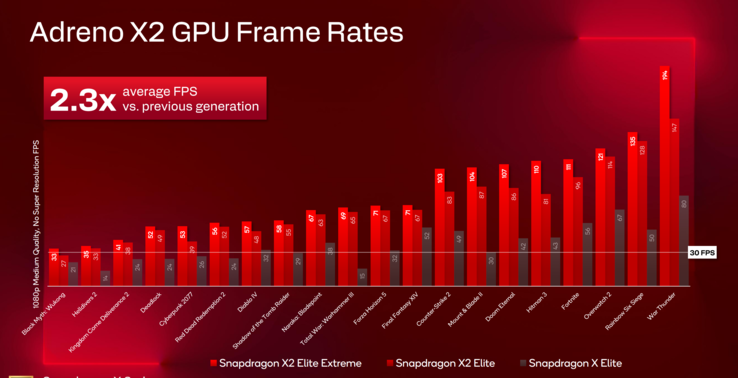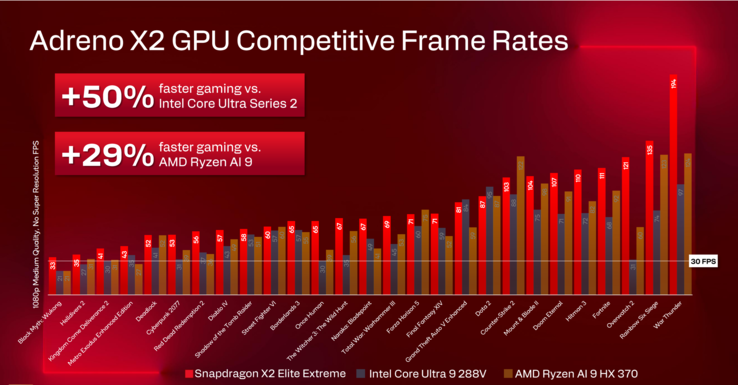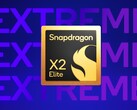Qualcomm has posted new information about the new Adreno X2 GPU powering its Snapdragon X2 Elite CPUs. It has four render slices with 2,048 ALUs (roughly equivalent to 16 AMD WGPs). The company claims it is up to 2.3 times faster than its predecessor while being 125% more power efficient. And it now supports kernel-level anti-cheat software, allowing future Snapdragon X2 Elite-powered laptops to run a wider range of games protected by Denuvo, Tencent ACE, GameGuard, BattleEye, and Uncheater. Interestingly, Riot's Vanguard isn't on the list.
The Adreno X2 achieves this with 21 MB of what Qualcomm calls 'high-performance on-chip memory'. This is essentially a block of L3 cache accessible by all render slices (5.25 MB/slice). Qualcomm claims shader processors can access it at up to 4 TB/s. Otherwise, the GPU can access the SoC's LPDDR5X-9523 RAM at up to 228 GB/s. Each slice of the Adreno X2 has two texture pipelines, four raytracing units, two render backends, and two shader processors.
Qualcomm has also posted some first-party benchmarks of the Adreno X2. While it struggles in some graphically demanding titles like Black Myth: Wukong, it excels in lighter titles, such as War Thunder, where the GPU outdoes its predecessor by a remarkable margin. The graphs also confirm the Snapdragon X2 Elite Extreme X2E-96-100 will pack a noticeably more powerful GPU than the Snapdragon X2 Elite Extreme X2E-86-100 and X2E-80-100. It can even play Cyberpunk 2077 at nearly 60 FPS, a pretty notable step-up from last generation.
When compared against similarly-specced alternatives from Intel and AMD, the Adreno X2 is surprisingly potent. It trades blows with the Radeon 890M and Arc 140v in a wide range of titles, such as Diablo IV, Metro Exodus, The Witcher 3: Wild Hunt, and once again, War Thunder. These are first-party benchmarks conducted on a Qualcomm reference device and not a production-ready laptop. The actual differences will be apparent once Snapdragon X2 Elite-powered laptops show up in early 2026.
Overall, the Adreno X2 is shaping up to be a formidable competitor to Intel and AMD's iGPUs. On-paper performance gains aside, the real problem with Adreno GPUs is lackluster driver support, and it will be interesting to see how Qualcomm tackles that.
Source(s)
Qualcomm





















